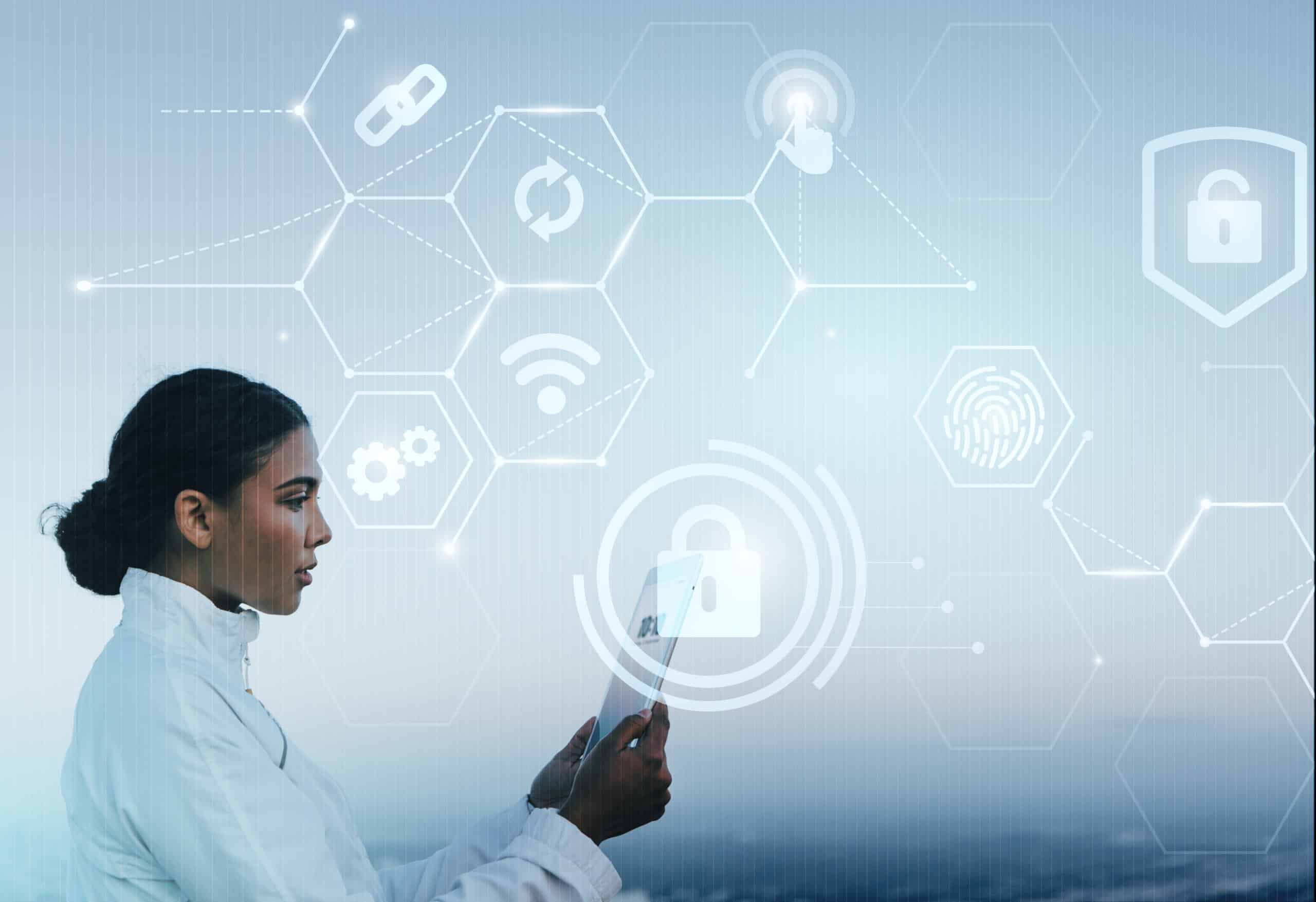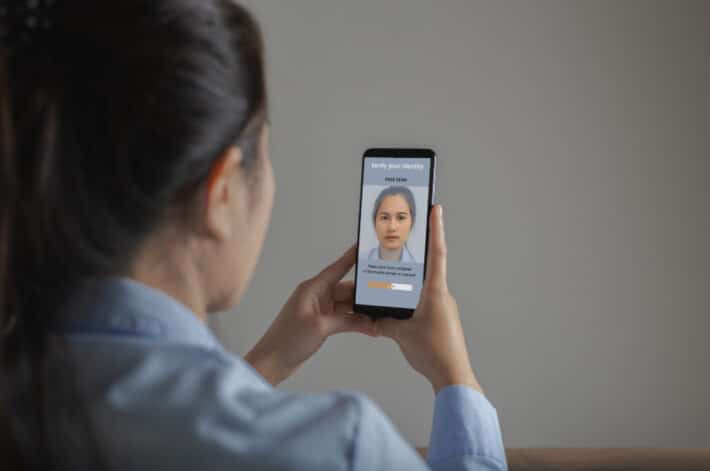Identity Verification Strategies For Combating Deepfake Technology

In an era where digital manipulation is increasingly sophisticated, understanding identity verification and deepfake technology has become essential. This article examines the components of identity verification, the mechanics of deepfake technology, ID verification for deepfake technology and the potential risks it presents, including misinformation and fraud.
Furthermore, we will analyze how robust identity verification methods can effectively address these threats, alongside other critical strategies to safeguard against the rising influence of deepfakes.
We invite you to explore this intriguing yet concerning intersection of technology and security with us.
What is Identity Verification?
Identity verification is the process of establishing the authenticity of an individual’s identity by validating the information they provide against trusted sources. This practice is becoming increasingly vital in today’s digital environment, as it facilitates secure transactions and mitigates the risks of identity theft.
Various methods are employed in identity verification, including biometric data analysis, digital signatures, and other verification techniques that bolster cybersecurity measures.
Given the proliferation of online services, the necessity for effective user authentication has never been more pronounced, rendering identity management a crucial component of data privacy and online security.
What is Deepfake Technology?
Deepfake technology employs artificial intelligence and machine learning algorithms to produce hyper-realistic synthetic media, frequently manifesting as manipulated videos or audio recordings. This advanced technology has the capability to generate realistic representations of individuals engaging in actions or statements that they have never performed, thereby raising significant concerns regarding misinformation and the potential for deepfake manipulation to erode trust in visual evidence.
The effectiveness of deepfake technology is rooted in sophisticated techniques, such as facial recognition and video forensics, which enable the creation of content that can be nearly indistinguishable from the original source. This poses considerable challenges for fraud detection and the verification of content authenticity.
How Does Deepfake Technology Work?
Deepfake technology functions through the integration of various advanced techniques, primarily utilizing machine learning algorithms to analyze and manipulate existing media. At its foundation, the creation of deepfakes entails training neural networks on extensive datasets of images and videos to generate realistic audiovisual content.
Through the application of facial mapping and manipulation, as well as audio manipulation techniques, these generated videos can convincingly portray individuals in scenarios that did not actually take place. This capability raises substantial concerns regarding trustworthiness and verification processes within online communication.
1. Artificial Intelligence (AI) and Machine Learning
Artificial intelligence and machine learning are pivotal to the advancement of deepfake technology, as they power algorithms capable of analyzing and synthesizing data to produce convincing synthetic media. These technologies play a critical role in training models that can accurately replicate human expressions and voices, resulting in highly realistic deepfakes.
As artificial intelligence continues to evolve, so too do the methods for both creating and detecting deepfakes, making it essential to establish reliable metrics for authentication and trust scores to mitigate potential misuse.
The dual role of AI in both the generation and detection of deepfakes presents significant challenges and opportunities within the realm of digital media. On one hand, the ease with which believable deepfakes can be produced raises concerns regarding misinformation campaigns and the erosion of public trust, as audiences may find it increasingly difficult to differentiate between reality and fabrication.
Conversely, advanced detection algorithms are being developed to identify manipulated media, thereby enhancing cybersecurity protocols.
This ongoing arms race between the creation and detection of deepfakes highlights the critical need for robust verification techniques. Establishing trust scores that assess the credibility of digital content is essential for maintaining integrity and accountability within an increasingly complex media landscape.
2. Facial Mapping and Manipulation
Facial mapping and manipulation are essential components of deepfake technology, employing advanced visual recognition techniques to create hyper-realistic representations of individuals. By analyzing biometric data, algorithms can accurately replicate facial expressions and movements, seamlessly integrating them into manipulated videos. This sophisticated manipulation raises significant concerns regarding content authenticity and the potential for fraudulent use in various contexts, underscoring the necessity for robust video forensics and tamper-proofing methods.
These algorithms utilize machine learning and neural networks to enhance their performance, enabling systems to learn from extensive datasets of human facial features. As these technologies evolve, they not only improve the realism of virtual avatars and characters in gaming and film but also invite scrutiny in security applications such as identity verification. By employing facial recognition systems, businesses and organizations aim to mitigate risks associated with identity theft and unauthorized access.
Therefore, there is an urgent need for image forensics to analyze and authenticate media, ensuring that individuals’ privacy rights are protected amid the rapid advancement of these capabilities.
3. Audio Manipulation
Audio manipulation is a crucial element of deepfake technology, enabling the modification of voice recordings to produce realistic and convincing audio deepfakes. This process frequently employs advanced voice verification techniques that analyze and replicate the unique characteristics of an individual’s voice, which raises significant concerns regarding the integrity of digital communications. As the prevalence of audio deepfakes continues to increase, the necessity for effective security protocols and authenticity checks becomes imperative to safeguard user consent and data privacy.
The capability to generate synthetic speech that is indistinguishable from that of a real individual introduces considerable risks, particularly in contexts involving misinformation, identity theft, and fraud. For example, one could envision a scenario in which an audio deepfake is deployed to impersonate a CEO, potentially resulting in financial loss or reputational damage for the organization.
To mitigate these threats, experts recommend the development of advanced detection tools that can identify manipulated audio content, along with stringent verification standards that ensure the authenticity of audio communications. By prioritizing security measures and promoting awareness of the potential dangers associated with audio deepfakes, individuals and organizations can more effectively navigate the complexities of this evolving technological landscape.
What Are the Dangers of Deepfake Technology?
The dangers associated with deepfake technology are multifaceted, encompassing the dissemination of misinformation as well as significant threats to personal reputations and public trust.
As deepfakes become increasingly sophisticated, they possess the potential to deceive individuals and organizations with ease, resulting in identity theft and various forms of fraud.
The risk of reputational damage is substantial, as manipulated media can be deployed in misinformation campaigns that undermine credible information and erode trust in digital platforms.
1. Misinformation and Fake News
Misinformation and fake news pose significant threats associated with deepfake technology, as manipulated media can easily mislead the public and distort perceptions of reality. The capability to create convincing deepfakes introduces unique challenges for evaluating trustworthiness, blurring the lines between authentic content and fabricated narratives. This situation emphasizes the urgent need for enhanced media literacy and effective deepfake detection tools to assist individuals in discerning truth from fiction within a digital landscape increasingly characterized by deception.
As society grows more dependent on digital platforms for news and information, the implications of deepfake technology become even more pronounced. The potential for societal division escalates when individuals consume altered content without engaging in critical assessment, which can lead to misunderstandings and conflicts.
It is essential for individuals to cultivate skills that enable them to analyze sources critically and question the integrity of the media they encounter. In this context, deepfake detection technologies emerge as vital resources, providing tools that can authenticate content and restore public confidence in media.
By integrating these technologies and strengthening media literacy initiatives, communities can work toward fostering a more informed society, better equipped to navigate the complexities of digital discourse.
2. Fraud and Scams
Fraud and scams represent a significant risk associated with deepfake technology, as identity thieves can utilize manipulated media to convincingly impersonate individuals. This capability complicates fraud detection efforts, necessitating that organizations reassess their cybersecurity policies and protocols to incorporate advanced verification methods.
The erosion of digital trust resulting from deepfake-induced scams emphasizes the critical need for robust identity verification systems to protect against identity theft and other malicious activities.
As these sophisticated techniques become more prevalent, the financial and reputational risks associated with deepfake scams increase, highlighting the urgent requirement for comprehensive fraud detection strategies. Organizations must embrace cutting-edge technologies and artificial intelligence to identify and mitigate deepfake content, thereby strengthening their defenses against this emerging threat.
In conjunction with user education and awareness initiatives, a multilayered approach to cybersecurity will enable both individuals and businesses, fostering a more resilient digital environment. Ultimately, the path forward involves cultivating a culture of vigilance and adaptability, ensuring that identity verification processes evolve in response to the rapidly advancing capabilities of fraudsters.
3. Reputation Damage
Reputation damage constitutes a significant risk associated with deepfake technology, as individuals and organizations may fall victim to malicious content that misrepresents them. These manipulated portrayals can be easily disseminated via social media platforms, leading to severe repercussions for both personal and professional reputations.
As social engineering tactics increasingly leverage deepfakes, the necessity for effective identity assurance and threat detection mechanisms becomes paramount to protect the data and reputations of individuals and organizations.
Considering the rapid advancements in artificial intelligence, the potential for deepfake technology has grown more sophisticated, complicating the task of distinguishing genuine content from fabricated material. This development not only jeopardizes trust among colleagues and clients but also raises concerns regarding the integrity of communications and the authenticity of organizational messaging.
The consequences of reputation damage can extend beyond immediate personal impacts, affecting public perception and trust in entire brands. To mitigate these risks, it is essential for organizations to implement proactive strategies, which include comprehensive employee training and the establishment of robust monitoring solutions. Such measures are crucial for safeguarding their reputation in this ever-evolving digital landscape.
How Can Identity Verification Help Combat Deepfake Technology?
Identity verification is essential in addressing the challenges posed by deepfake technology by employing robust methodologies that enhance the security of transactions and the integrity of data.
By utilizing multi-factor authentication and biometric verification, organizations can confirm the legitimacy of individuals behind digital identities, thereby mitigating the risks of misinformation and identity theft.
These verification techniques serve not only to authenticate users but also to promote trust in digital interactions by establishing a secure framework for online security.
1. Multi-Factor Authentication
Multi-factor authentication (MFA) serves as a critical mechanism in identity verification, significantly enhancing user security by necessitating multiple forms of verification prior to granting access to sensitive information. The implementation of MFA allows organizations to substantially mitigate risks associated with identity theft and unauthorized access, thereby assuring that the individual behind a digital identity is indeed who they claim to be. This additional layer of security not only aids in countering deepfake technology but also strengthens user trust and confidence in digital rights.
MFA is fundamental to any comprehensive cybersecurity policy, reflecting a proactive approach to risk management. By incorporating various verification methods, such as biometrics, SMS codes, or authentication applications, organizations can create a formidable barrier against cyber threats. This multi-layered strategy not only enhances defenses against unauthorized access but also addresses evolving security challenges, contributing to a more resilient infrastructure.
As user verification methods continue to advance, the adoption of MFA becomes imperative, promoting stronger identity protection practices and ensuring compliance with regulatory standards that require enhanced security measures.
2. Biometric Verification
Biometric verification represents an advanced method of identity authentication that employs unique physical characteristics, such as facial recognition and behavioral biometrics, to verify individuals. This technology provides a significantly higher level of security compared to traditional identity verification methods, as it is considerably more difficult to replicate.
By integrating biometric verification within security protocols, organizations can enhance user privacy and data protection, thereby establishing a more robust framework to counteract threats posed by deepfake technology.
Biometric systems facilitate a more efficient verification process, reducing the time required for authentication while concurrently diminishing the risk of identity theft. However, the implementation of such systems is not without challenges; concerns regarding data security and the potential misuse of biometric information can undermine user trust.
It is imperative to strike a balance between effective identity verification and the protection of personal information, as users frequently express concerns about how their biometric data is stored and who has access to it. Accordingly, while biometric verification offers substantial advantages in bolstering security, organizations must also prioritize transparency and adhere to ethical practices to foster user confidence and ensure compliance with privacy regulations.
3. Document Verification
Document verification is a fundamental aspect of identity verification processes, utilizing methods such as digital signatures and provenance tracking to ensure the authenticity of documents. By validating documents, organizations can establish a robust foundation for identity assurance, thereby enhancing their security frameworks in an increasingly digital environment that is vulnerable to threats posed by deepfake technology. Effective verification processes not only safeguard against fraudulent activities but also foster trustworthiness in online interactions.
This verification landscape encompasses advanced technologies, including biometric recognition, which provides an additional layer of security by associating documents with an individual’s unique physical characteristics. The incorporation of machine learning algorithms facilitates real-time analysis and detection of inconsistencies within submitted documents.
As organizations continuously adapt to the evolving nature of digital fraud, these sophisticated methods are vital not only for minimizing risk exposure but also for promoting consumer confidence in digital transactions. The strategic implementation of these verification techniques is essential for constructing resilient security frameworks capable of effectively countering emerging threats.
What Are Other Strategies for Combating Deepfake Technology?
To effectively address the challenges posed by the rise of deepfake technology, a multifaceted approach is essential. This should include advanced detection technologies, public awareness campaigns, and collaboration among various stakeholders.
The implementation of state-of-the-art detection tools can significantly enhance the capacity to identify and mitigate malicious deepfakes. Furthermore, educating the public about the risks associated with synthetic media contributes to a more informed citizenry.
Additionally, cooperation between technology companies and government agencies can facilitate the development of comprehensive strategies that improve threat intelligence and ensure regulatory compliance.
1. Developing Advanced Detection Technology
The development of advanced detection technology is essential in the ongoing battle against deepfake media, utilizing algorithmic detection methods that can accurately identify manipulated content. As deepfake technology continues to advance, it is imperative that the tools designed for its detection also evolve, requiring continuous innovation in cybersecurity policies and risk assessment strategies.
This ongoing advancement is critical, as deepfakes have the potential to undermine trust in digital communications and disrupt various sectors, including journalism and finance. Recent innovations highlight the use of machine learning algorithms that analyze pixel discrepancies and audio inconsistencies, significantly improving detection rates.
Moreover, organizations must integrate these advancements into their cybersecurity frameworks to enhance risk assessment processes. The establishment of robust detection systems not only strengthens the integrity of information but also promotes greater public awareness, enableing users to recognize and scrutinize potential deepfake content before it contributes to a wider spread of misinformation.
2. Educating the Public About Deepfakes
Educating the public about deepfakes is crucial for promoting media literacy and addressing misinformation campaigns that exploit the deceptive potential of synthetic media. By increasing awareness of the existence and implications of deepfakes, individuals can cultivate critical thinking skills that enhance digital trust and enable them to scrutinize the authenticity of online content. This proactive approach also underscores the significance of user consent and ethical considerations in digital interactions.
To effectively address these challenges, it is imperative to establish community initiatives and educational programs that focus on workshops and online resources for recognizing manipulated media. Schools, organizations, and governmental bodies can collaborate to create user-friendly platforms that assist individuals in identifying and comprehending the techniques behind deepfakes.
Additionally, fostering partnerships with technology companies can facilitate the development of tools designed to detect deepfake content, ensuring that the public is well-informed and adequately equipped to navigate the complexities of a digital landscape rife with misinformation.
3. Collaboration Between Tech Companies and Government Agencies
Collaboration between technology companies and government agencies is essential for developing comprehensive strategies to address the challenges presented by deepfake technology. By sharing resources and expertise, stakeholders can enhance threat intelligence and work towards regulatory compliance that safeguards citizens from the potential harms associated with deepfakes.
This unified approach promotes innovation in detection and verification technologies, facilitating the creation of effective solutions to combat identity theft and misinformation.
Such partnerships can drive the development of advanced tools that not only detect deepfakes but also educate the public about the associated risks. With the agility of the technology sector and the regulatory expertise of government entities, robust frameworks can be established to deter malicious use.
By leveraging each other’s strengths, these collaborations can ensure that advancements in technology align with necessary protective measures, ultimately fostering a safer digital environment for all users.
Frequently Asked Questions
What is deepfake technology and why is it a concern for identity verification?
Deepfake technology is a type of artificial intelligence that can create highly realistic fake images, videos, and audio recordings. This technology can be used to create fake identities, making it more difficult for traditional identity verification methods to distinguish between real and fake individuals.
What are some common strategies for combating deepfake technology in identity verification?
One strategy is to use biometric authentication methods, such as facial recognition or voice recognition, which are more difficult for deepfake technology to replicate. Another strategy is to use multi-factor authentication, requiring a combination of different forms of identification to verify a person’s identity.
How can reference data be used in identity verification to combat deepfake technology?
Reference data, such as government-issued IDs or past transaction history, can be compared to the information provided by an individual to verify their identity. This can help to detect inconsistencies or discrepancies that may indicate a deepfake identity.
What are the limitations of using reference data for identity verification in the face of deepfake technology?
Deepfake technology is constantly evolving, making it difficult for reference data to keep up. Additionally, if a deepfake identity is created using stolen personal information, reference data may not be able to detect it as fraudulent.
Are there any emerging technologies or techniques that can help combat deepfake technology in identity verification?
Yes, some companies are developing anti-deepfake technology that uses machine learning algorithms to detect and flag fake images and videos. Additionally, Expert are exploring blockchain technology as a potential solution for securely storing and verifying identity information.
What can individuals do to protect themselves from deepfake identity fraud?
Individuals can take steps to protect their personal information, such as regularly changing passwords and avoiding sharing sensitive information online. It is also important to be cautious of suspicious requests for personal information and to report any unusual activity to the appropriate authorities.



